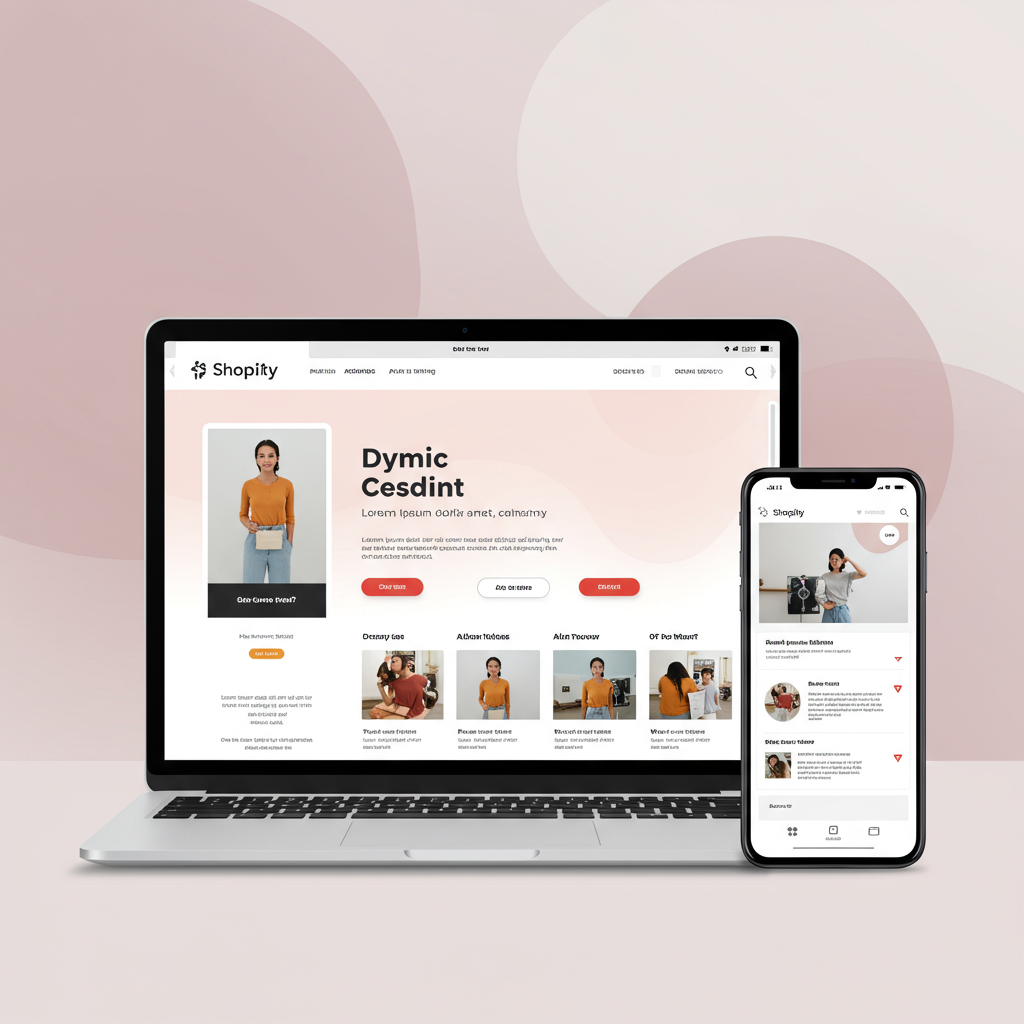Transforming your digital storefront into a conversion powerhouse for the future of e-commerce.
Hello fellow Shopify merchants! As we look ahead to 2025, the digital landscape continues to evolve at an incredible pace, presenting both challenges and exciting opportunities for our online businesses.
Your Shopify store’s homepage isn’t just a digital storefront; it’s the virtual front door to your brand, often the very first impression a potential customer gets.
In today’s competitive e-commerce world, a well-designed, optimized homepage is no longer a luxury—it’s an absolute necessity for converting visitors into loyal customers.
I’ve spent a lot of time analyzing emerging trends and best practices, and I want to share my insights on how you can elevate your Shopify homepage design for 2025.
Our collective goal here is to create a homepage that not only looks fantastic and aligns with your brand identity but also performs exceptionally, driving engagement and ultimately, sales.
First and foremost, let’s talk about the hero section. This is the prime real estate above the fold, and it needs to grab attention instantly and communicate your value proposition.
For 2025, consider dynamic, high-quality video backgrounds or interactive elements that showcase your products in action, rather than static images.
Your main headline should be clear, concise, and immediately communicate your unique selling proposition (USP). What problem do you solve? What makes you different from competitors?
Accompanying this, a strong, singular call-to-action (CTA) button is crucial. Don’t overwhelm visitors with too many choices right away; guide them to the next logical step.
Next, navigation. It must be intuitive and easily accessible, whether your customer is browsing on a desktop computer or a mobile device. Think sticky headers and clearly labeled menu categories.
Mobile-first design isn’t just a buzzword anymore; it’s the absolute standard. A significant portion of your traffic will come from mobile devices, so ensure your homepage is flawlessly responsive and optimized for touch.
This means optimizing images for fast loading on mobile, using legible fonts that scale well, and ensuring touch targets (buttons, links) are large enough for easy interaction on smaller screens.
Personalization is going to be huge in 2025, increasingly driven by artificial intelligence. Can your homepage dynamically display products or content based on a visitor’s past behavior or even their geographic location?
Shopify apps and integrations are increasingly offering these capabilities, allowing you to create a truly bespoke and relevant experience for each unique user.
Showcase your best-selling or newest products prominently. Use high-resolution images and concise, benefit-driven descriptions that entice clicks and encourage exploration.
Consider implementing interactive product carousels or even 3D models that users can rotate and zoom. Augmented Reality (AR) previews are also becoming more accessible and engaging.
Social proof is more powerful than ever in building trust. Integrate customer reviews, testimonials, or user-generated content directly onto your homepage.
Displaying star ratings, snippets of glowing reviews, or even an Instagram feed showcasing customers using your products builds immediate credibility and encourages purchases.
Don’t forget about your brand story. A small, compelling section dedicated to your ‘About Us’ or ‘Our Mission’ can connect with customers on an emotional level, especially if sustainability or ethical practices are core to your brand.
Page speed is non-negotiable. A slow-loading homepage will lead to high bounce rates and frustrated customers. Optimize images, minimize app bloat, and leverage Shopify’s built-in speed optimizations.
Search Engine Optimization (SEO) starts at the homepage. Ensure your title tags, meta descriptions, and image alt texts are optimized with relevant keywords that describe your products and brand.
While the homepage isn’t typically a content hub, a small section linking to your latest blog posts or valuable guides can drive traffic to valuable content and improve your overall SEO.
Make it easy for customers to get help. Prominently display links to your FAQ, contact page, or even integrate a live chat widget. Trust is built on accessibility and responsiveness.
Accessibility for all users is also paramount. Ensure your design adheres to WCAG guidelines, including proper color contrast, keyboard navigation, and descriptive alt text for all images.
Finally, remember that your homepage is never truly ‘finished.’ It’s an evolving entity. Regularly A/B test different elements—CTAs, headlines, image choices—to see what resonates best with your audience.
Analyze your analytics data to understand user behavior. Where are they clicking? Where are they dropping off? Use these insights to continuously refine and improve your homepage’s performance.
By focusing on these key areas—dynamic visuals, personalization, mobile-first design, blazing speed, compelling social proof, and continuous optimization—you’ll be well on your way to a high-performing Shopify homepage in 2025.
I believe these tips will give you a solid foundation for success and help your store stand out in the competitive e-commerce landscape.
What do you think about this article? I’d love to hear your thoughts and any strategies you’re planning to implement for your own Shopify store!






